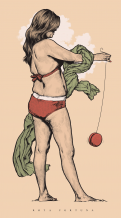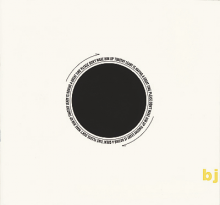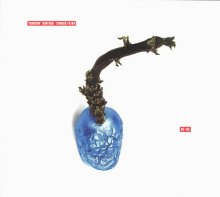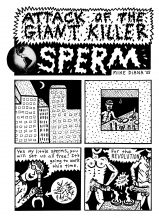| Umělec magazine 2004/4 >> Kitsch and Ken’s Aunt A Portrait of Polish Contemporary Art | List of all editions. | ||||||||||||
|
|||||||||||||
Kitsch and Ken’s Aunt A Portrait of Polish Contemporary ArtUmělec magazine 2004/401.04.2004 Marta Smolińska-Byczuk | poland | en cs |
|||||||||||||
|
Poland’s political breakthrough in 1989 brought no significant breakthrough in art. News was widespread in the nineties of a critical art directing its sharp point at Democles and deconstructing the reality of a country freshly freed from the Communist regime. Communism was replaced by consumer society and the worship of eternal youth. Artists called attention to the fact that in 1989 Poles did not achieve that sought-after freedom—in place of Communist censorship, a repression of a completely different sort appeared.
The work of Zofie Kulik who works with the analyses of the rhetoric, symbols and gestures of Communist power somehow outgrew this context and the de-masking mechanism of any kind of power. Zbigniew Libera, on the other hand, was dedicated to hunting for eternal youth and the fashion of thin bodies. Along with Barbie and Ken, Libera introduced Ken's Aunt, an elderly version of a Barbie doll. In terms of criticism, Alicja Żebrowska a Katarzyna Kozyra touched on problems associated with sexuality, body awareness and stereotypes that endure in tradition and in Poland’s Catholic society. Artists of that wave, who often drew inspiration from the Viennese Actionists, used the naked human body in connection with religious symbols. They were radical, and radicalism has a quality that is very rapidly exhausted. That happens with criticism that gradually, as if naturally, all by itself extinguishes, goes silent, or fades away. The court hearings and judgment on Dorota Nieznalska, who exhibited masculine genitalia on a cross in the context of exercise machinery (The Passion), brought her quick fame, but also brought suspicion that young artists regardless scrupulously use scandal as a fast track to fame. Discussion that evolved out of these events concentrated on the question of artistic freedom and censorship within the conservative Catholic camp. Lacking was any reflection on artistic values of the work. Grzegorz Klaman, a frappante author, whose work depicts human organs locked up in iron and glass reliquaries, filmed an attack the attack on society by Dorota Nieznalska. Critical art was transformed into publicity stunts. In the second half of the nineties, a trend increased that was dedicated to the problem of the holocaust. Other than Jósef Szajn, who addresses his own real experience as a prisoner in his work, emphasizing the traumatic experience, even authors of the younger generation work with the subject. Bundles of hair, scarves, glasses, shoes that almost every Pole saw on school outings to Auschwitz, and the incessant discussion concerning Polish-Jewish relationships, has focused the attention of the artists who are now exploring the subject as one of the heaviest aspects of Polish history. Work associated with this wave can be divided into three basic groups: In the first belongs to works whose objective is to bring to mind the fading traces of people who once lived among us (Rafał Jakubowicz); the second group defines mechanisms of contemporary society in which everything—including the holocaust—is for sale (“Lego.” Zbigniew Libera); the third group consists of work that attempts to be rid of those cursed places associated with the Holocaust—with the assistance of entertainment; or they follow the manner in which nature expansively intervenes, covering green places where a thousand people were exterminated (Berek of Artur Żmijewski, Winterreise Mirosława Bałek). In terms of contemporary polish art there is also a Renaissance in painting. The traditional painting, hung on a wall, has returned triumphantly. Whether the paintings incorporate the language of photography or parodies, these paintings rely on the esthetic. What are young Poles painting? Simply put, they paint notations of surrounding experiences: The Polish family, athletes, politicians (Marcin Maciejowski), new habits (Maciej Kozłowski), and also the world of young women ((Paulina Ołowska) and still lives (Marek Firek). The secret of the painter’s language in a studio continues to allure artists whose work is concentrated on traditional questions: What is a picture? What are its limits? What potential is inherent? (Jan Berdyszak, Tomasz Ciecierski, Piotr C. Kowalski, Paweł Łubowski). A young group of artists is also associated with this group (Kamil Kuskowski, Zbigniew Rogalski) who examine the contemporary world. In what direction is Polish art headed? Towards an esthetic of kitsch beautiful such as what has been deliberately and pointedly propagated lately by Piotr Uklański? Or perhaps toward intelligent games with spaces such as those of Monika Sosnowska whose work includes a sequence of smaller and smaller doorways leading nowhere? It’s a puzzle for now.
01.04.2004
Recommended articles
|
|||||||||||||
|
04.02.2020 10:17
Letošní 50. ročník Art Basel přilákal celkem 93 000 návštěvníků a sběratelů z 80 zemí světa. 290 prémiových galerií představilo umělecká díla od počátku 20. století až po současnost. Hlavní sektor přehlídky, tradičně v prvním patře výstavního prostoru, představil 232 předních galerií z celého světa nabízející umění nejvyšší kvality. Veletrh ukázal vzestupný trend prodeje prostřednictvím galerií jak soukromým sbírkám, tak i institucím. Kromě hlavního veletrhu stály za návštěvu i ty přidružené: Volta, Liste a Photo Basel, k tomu doprovodné programy a výstavy v místních institucích, které kvalitou daleko přesahují hranice města tj. Kunsthalle Basel, Kunstmuseum, Tinguely muzeum nebo Fondation Beyeler.
|






































 We Are Rising National Gallery For You! Go to Kyjov by Krásná Lípa no.37.
We Are Rising National Gallery For You! Go to Kyjov by Krásná Lípa no.37.
Comments
There are currently no comments.Add new comment